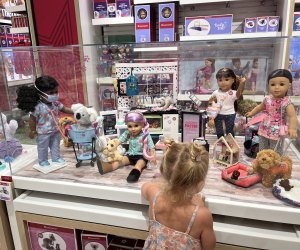Home Organizing 101

Here are some questions to answer to determine if you should take the time to read this article:
1. Do you spend more than two minutes a day looking for ANYTHING?
2. Does accessing any daily needed item require you to move something else to reach it?
3. Do you have visions of night gnomes merrily tidying while you sleep and magically making the stress inducing piles disappear?
If you’ve answered yes to any of the above, read on.
OUR LATEST VIDEOS
Why organize? Because it makes your life so much easier. I know. You look at the pile on the desk, in the drawer, or stuffed in the closet and you think, “You want me to organize that?! That will produce more stress than I need right now." Now I want you to compare the organizing stress you just felt to the daily time consuming stress of not being able to find something when you’re in a hurry. Then consider what it would feel like to find things with ease in the kitchen, in the cupboard, in your kid’s room and under the sink.
With these 5 simple organizing tips, you will begin to take the stress out of your day by easily accessing your stuff.
The primary rule of organizing is that you should be able to see everything within its space. Try it out. Open your pantry cupboard. Can you visually locate every single item in that space without having to reach in and move things around or take things out? “Impossible!” you’re thinking. I say to you it can be done.
STEP #1 - Evaluate the size and shape of the space
Is the space tall, wide, and/or deep? That assessment will determine how you organize the space. For example, if your shelf space is deep and tall, you will have the option to insert little shelves in the back to raise items high so you can see them, like cans in your pantry. A shelf won’t fit, you say? With everything out on your counter, find the tallest items, like vertical boxes of pasta or crackers. Put those in back and place the remaining items in front, based on height. So a tiered descent from back to front might look like this: stacked cans and cracker boxes in back, a jar of olives, a canister of oats, bottles of honey and jams, and bags of pasta or beans laid flat.
 Depending on the depth of our dresser drawers, we fold clothes in a shape that best fits the space. My drawers are deep so my t-shirts are folded and stacked flat facing up, like file folders. My son's drawers are more shallow so his t-shirts are rolled. Either way, every item is visible and no searching is required.
Depending on the depth of our dresser drawers, we fold clothes in a shape that best fits the space. My drawers are deep so my t-shirts are folded and stacked flat facing up, like file folders. My son's drawers are more shallow so his t-shirts are rolled. Either way, every item is visible and no searching is required.
If you’re organizing a space with very little surface area, think vertically. What can you remove from a surface and either vertically stack or hang on the wall? There is an amazing assortment of products out there to help you organize a space, depending on its size and shape. My closet space is so severely limited that I had to buy stackable hangers which connect vertically. I also love finding organizing tools at garage sales. Once I scavenged an old wooden spice rack that I hung on my son’s wall to hold his little stuffed animals.
STEP #2 – Group by category
To minimize the time it takes to locate things, group items by category. For example, I know that all baking items are in one drawer in my kitchen, all files relating to my house are grouped in one section of my file cabinet, and all camping equipment is in one section of my storage shed. The beauty of this method is I don’t have to think too hard when looking for something. You can also find great things around the house to help you. I use a lot of baskets (one holds all my bags of pasta, another holds all my son’s spy gear in his toy drawer), jars (to group things vertically like paint brushes; desk items like pencils, rulers or scissors; or odd cleaning tools under the sink), or the bottom half of small, shallow tins, plastic containers or boxes to organize things in drawers like hair clips, computer cables, or earrings.
STEP #3 – Know what’s inside every container
Even if everything in your space is perfectly visible, it will do you no good if you can’t immediately identify what the container holds. For this reason, I’m a big fan of glass or clear plastic. Why create the extra step of opening the container when you could instead plainly see what’s inside? For those shoe boxes at the top of your closet or boxes in storage, all you need is my absolute favorite tool – a sharpie. Simply write what the box contains on the outside and one glance will give you the information you need. If I add something to the box, I write what I’ve added on the outside, sometimes using a blank address label that I stick on.
STEP #4 – Do you really need it?
If you notice you have to push a closet door or toy box lid a little too hard to get it closed, it’s time to weed. If you haven’t worn that shirt or you child hasn’t played with that toy in the last year, it can go.
STEP #5 – A little help goes a long way
If you need to make space but find a lot of emotion pops up around certain items – like the box behind my desk containing divorce documents from years ago – then you might consider inviting a friend for dinner and purging. If it’s too hard for you to even be involved, then go run an errand and absolutely let them do it. That’s what friends are for. If that’s not an option, there are plenty of professional organizers out there, like me, who enjoy helping folks de-clutter. If you go that route, make sure and choose someone who comes well referred.
Remember, the goal is not to make things look pretty, although that's often a nice byproduct. The overarching aim is to eliminate the internal stress that is often caused by external chaos. With all the mayhem in our daily lives, a little peace goes a long way.

























